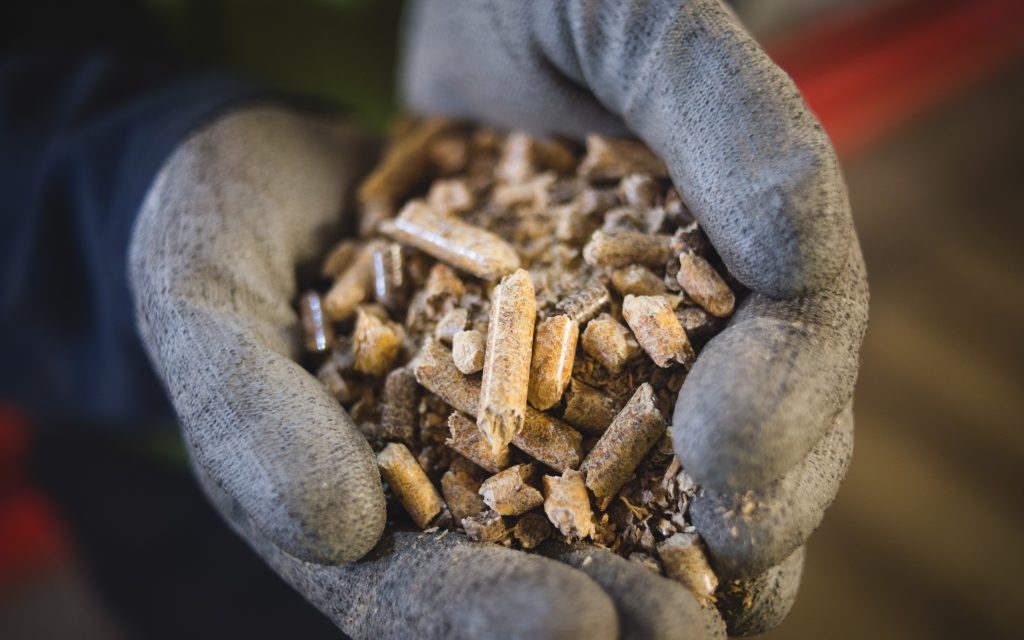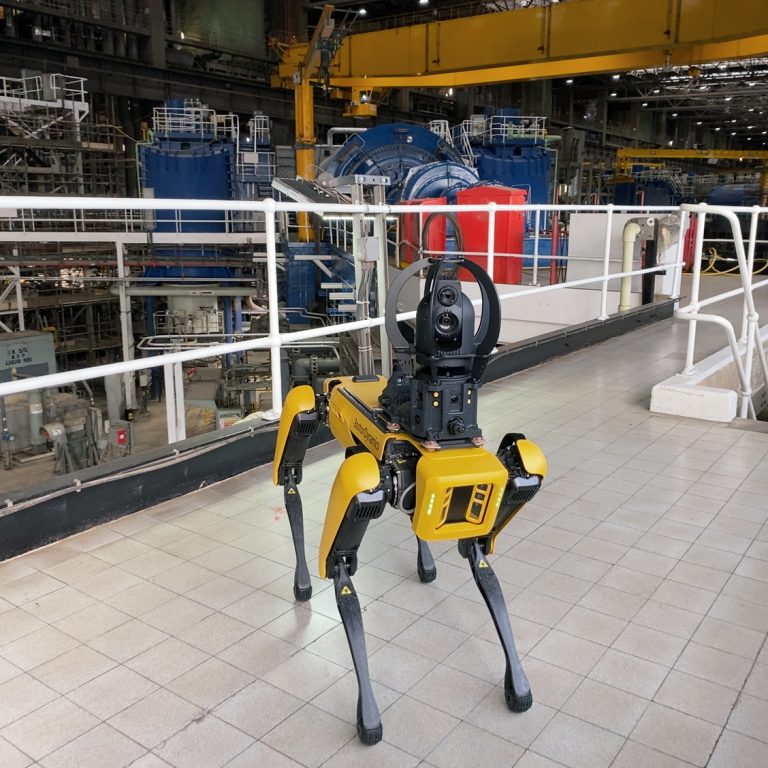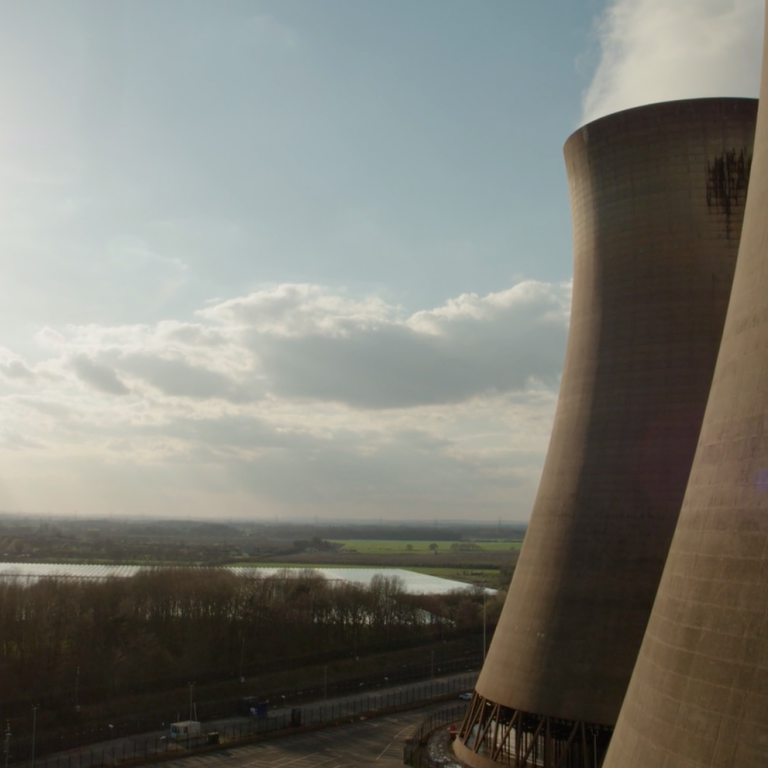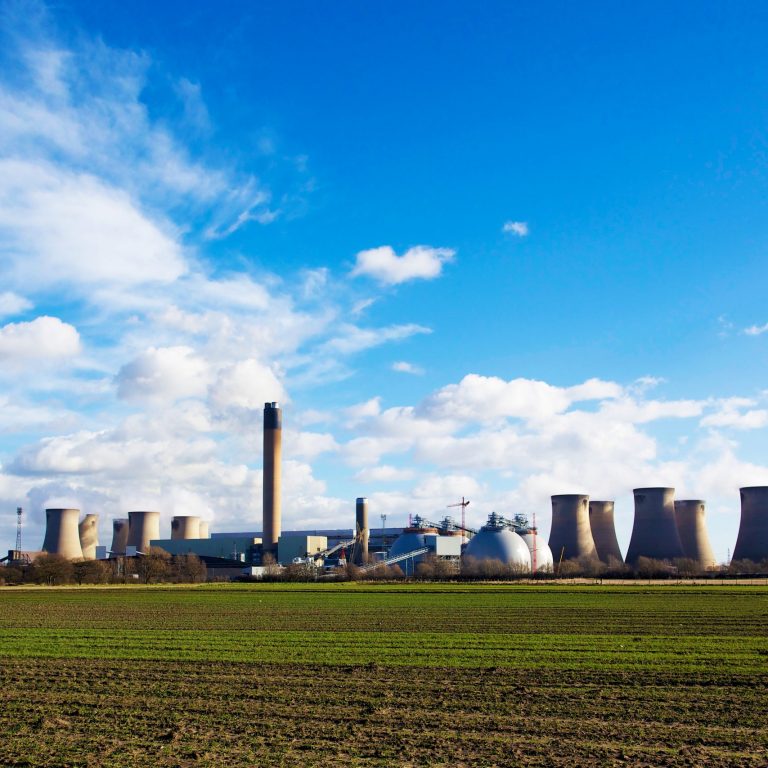Wood has been used as fuel for tens of thousands of years, but this wood – a compressed wood pellet – is different. It’s the size of a child’s crayon and weighs next to nothing, but when combined with many more it is a smart solution to generating cleaner electricity compared to coal.
Wood pellets like these are being used at Drax Power Station to generate electricity and power cities. Not only are they renewable and sustainable, but because they are compressed, dried and made from incredibly fine wood fibres, they’re also a very efficient fuel for power stations.
This is how a compressed wood pellet is made at the Drax Biomass Amite BioEnergy Pellet Plant in Mississippi.
The wood arrives to the yard
Wood arrives at the plant via truck and is sent to one of four places: the wood storage yard, the wood circle (where wood is primed for processing), the piles of sawdust and woodchip, or straight into processing.
Bark is removed and kept for fuel
Logs are fed into a debarker machine, which beats the logs together inside a large drum to remove the bark. The bark is put aside and used to fuel the woodchip dryer, used later in the process.
Thinned wood stems become small chips
The logs – low-value fibre from sustainably managed working forests – need to be cut down into even smaller pieces so they can then be shredded into the fine material needed for creating pellets. Inside the wood chipper multiple blades spin and cut the logs into chips roughly 10mm long and 3mm thick. The resulting chips are fed into the woodchip pile, ready for screening.
Chips are screened for quality and waste is removed
Chipped down wood can include waste elements like sand, remaining bark or stones that can affect pellet production. The chips are passed through a screener that removes the waste, leaving only ideal sized wood chips.
The biggest hairdryer you’ve ever seen
The wood chips need to have a moisture level of between 11.5% and 12% before they go into the pelleting process. Anything other than this and the quality of the resulting pellets could be compromised. The chips enter a large drum, which is blasted with hot air generated in a heater powered by bark collected from the debarker. The chips are moved through the drum by a large fan, ready for the hammer mill.
Small woodchips become even smaller woodchips
Inside the hammer mill there’s a spinning shaft mounted with a series of hammers. The wood chips are fed into the top of the drum and the spinning hammers chip and shred them down into a fine powdery substance that is used to create the pellets.
Putting the chips under pressure – a lot of pressure
The shredded woodchip powder is fed into the pellet mill. Inside, a rotating arm presses the powdered wood fibre through a grate featuring a number of small holes. The intense pressure heats up the wood fibre and helps it bind together as it passes through the holes in a metal ring dye, forming the compressed wood pellets.
Resting and cooling down
Fresh pellets from the mill are damp and hot, and need to rest and cool before transporting off site. They’re moved to large storage silos kept at low temperatures so the pellets can cool and harden, ready for shipping.
One of the biggest domes you’ve ever seen
This is the final stage before shipping. Specially designed and constructed storage domes are used to store the wood pellets after they are transported to the Mississippi River, Louisiana and before they make their way across the Atlantic to the UK.




















